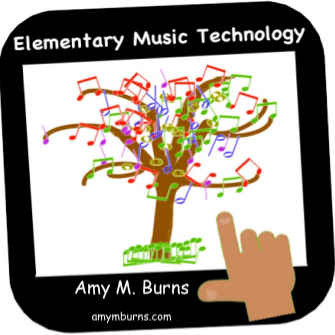PK & K Pumpkin Medley Steady Beat Body Percussion Play-Along Video
This week’s medley is a steady beat body percussion play-along video for preschool and kindergarten. There are many resources that explain why it is so important for children to be able to keep a steady beat. From Phyllis Weikert’s study that showed that keeping a steady beat helps children feel the rhythm of language to Kindermusik’s website explains that learning the steady beat helps them later in life with using scissors, hammers, and other types of tools, young students greatly benefit from learning and performing the steady beat (Kindermusik, 2011). It impacts their gross- and fine-motor skills that affect their learning to walk, ride a bike, run, dribble a ball, and more. Moving to a steady beat is also correlated with early childhood language and literacy skills. The brain processes music in a similar way that it processes language. Children with steady beat training showed an increase in neural responses to speech sounds. (My Little Conservatory, 2018)
Medley
This medley consists of four songs about pumpkins and ends with a dance break. The songs do not reference Halloween or any other item in fall. They just reference pumpkins.
Five Little Pumpkins Sitting on a Gate
Spookley The Square Pumpkin by Joe Troiano (https://www.youtube.com/watch?v=TqPgC3rDvVA)
Five Little Pumpkins Laughing (Super Simple Songs) (https://www.youtube.com/watch?v=trDl36m9pgA&t=61s)
I Love Pumpkins (Harry Kindergarten Music) (https://www.youtube.com/watch?v=I884JkS_aFg&t=49s)
Dance Break
Movements






The movements used for the steady beat are combinations of the following:
Pat their legs
Pat their legs in a criss-cross motion so they cross the midline
Clap
Shh
Stomp their feet
Resources
Kindermusik. (2011, January 20). The benefits of steady beat - kindermusik. Minds On Music – The Kindermusik Blog. Retrieved September 25, 2022, from https://www.kindermusik.com/mindsonmusic/the-benefits-of-steady-
My Little Conservatory. (2018, December 18). 4 reasons why steady beat matters in childhood. My Little Conservatory. Retrieved September 25, 2022, from https://mylittleconservatory.com/4-reasons-steady-beat-matters-early-childhood-education/beat/#:~:text=A%20study%20by%20Phyllis%20Weikert,gets%2C%20and%20equally%20as%20important!
I hope that you enjoy this steady beat medley!
